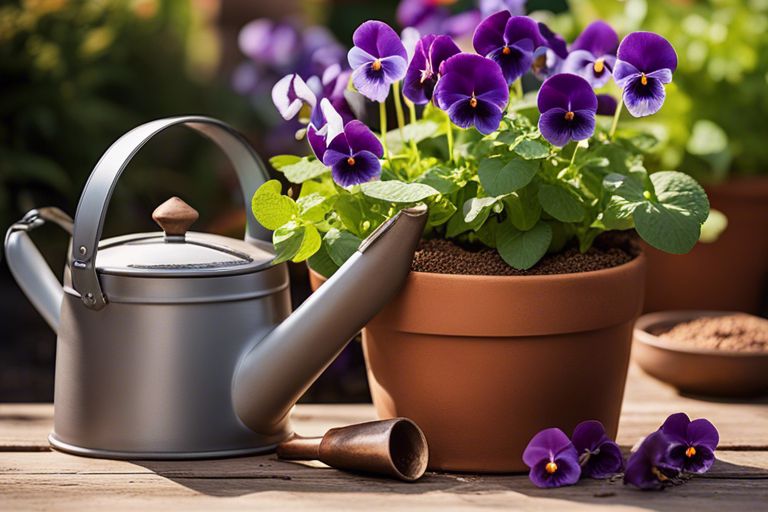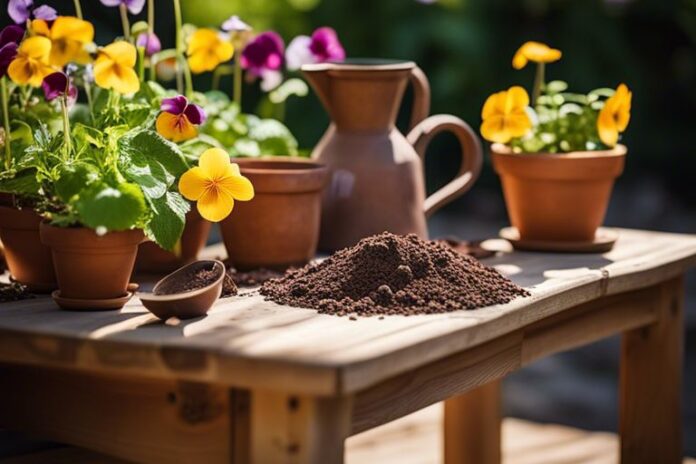Most gardeners dream of a vibrant garden filled with colorful blooms, and planting Viola seeds is the perfect way to achieve just that. Violas, also known as pansies, are easy to grow and can brighten up any garden with their charming flowers. In this beginner’s guide, we will provide you with step-by-step instructions on how to plant Viola seeds successfully. Whether you are a seasoned gardener looking to add a pop of color to your garden or a novice with a green thumb, this guide will help you achieve a stunning display of Viola blooms in no time.
Key Takeaways:
- Choose the right seeds: Select high-quality viola seeds from a reputable source for best results.
- Prepare the soil: Plant viola seeds in well-draining soil with good organic matter to encourage healthy growth.
- Optimal planting time: Plant viola seeds in early spring or late summer for ideal germination and growth conditions.
- Light and water requirements: Provide viola seeds with ample sunlight and consistent moisture for vibrant blooms.
- Regular maintenance: Keep an eye on weeds, pests, and diseases, and deadhead spent blooms to promote continuous flowering.
Types of Violas to Plant
Clearly, when it comes to planting Viola seeds for vibrant blooms, it is imperative to consider the different types available. Knowing the variety of violas will help you choose the right ones for your garden.
| Annual Violas | Perennial Violas |
| Flourish for one growing season and then die | Return year after year |
| Require replanting every year | Low maintenance once established |
| Colorful and vibrant blooms | Continuous blooms year after year |
| Ideal for filling gaps in flower beds | Great for long-term garden planning |
| Easy to grow from seeds or seedlings | Provide a reliable display of flowers |
Annuals vs Perennials: Choosing the Right Varieties
You must decide whether you prefer the seasonal bursts of color from annual violas or the enduring beauty of perennials in your garden. Consider your gardening style and the amount of time you can dedicate to maintenance before making your selection.
Popular Viola Varieties for Your Garden
If you want to add Violas to your garden, look for popular varieties such as Purple Showers and Johnny-Jump-Ups. These varieties are known for their stunning colors and easy maintenance, making them perfect for gardeners of all skill levels.
This is a great opportunity to add a pop of color to your garden with low maintenance flowers that will continuously bloom throughout the season. Both Purple Showers and Johnny-Jump-Ups are hardy plants that can thrive in various growing conditions, enhancing the visual appeal of your garden.

Factors to Consider Before Planting
If you are planning to plant viola seeds for vibrant blooms, there are several factors that you need to consider before getting started. Taking these elements into account will ensure that your violas thrive and flourish in your garden. Below are some key points to keep in mind:
- Soil Quality and Preparation: Even before sowing viola seeds, it is imperative to assess the quality of your soil and prepare it accordingly. Violas prefer well-draining, fertile soil with a slightly acidic pH level. Prepare the soil by adding organic matter like compost or aged manure to improve its structure and nutrient content.
- Climate and Seasonal Growth Patterns: Patterns in climate and seasonal growth play a crucial role in the success of your violas. It is important to consider the temperature, humidity levels, and sunlight exposure in your region. Violas generally thrive in cool weather and partial shade, making them ideal for spring and fall planting. Recognizing these patterns will help you provide the optimal growing conditions for your violas.
Step-by-Step Guide to Planting Viola Seeds
Unlike other plants, Viola seeds require specific conditions to thrive and bloom. Proper planting techniques are crucial for successful germination and growth.
| Gathering Supplies | Preparing the Planting Area |
| Viola seeds | Sunny location with well-draining soil |
| Seed-starting trays | Organic compost or fertilizer |
| Seed-starting mix | Watering can or mister |
Gathering Supplies and Preparing the Planting Area
On a sunny day, gather your Viola seeds, seed-starting trays, seed-starting mix, organic compost or fertilizer, and a watering can or mister. Choose a sunny location with well-draining soil to prepare the planting area for optimal Viola growth.
Sowing Seeds and Caring for Emerging Seedlings
On a prepared seed-starting tray filled with seed-starting mix, plant Viola seeds at the recommended depth. Water gently and place the tray in a warm location with indirect sunlight. Keep the soil moist but not waterlogged. As seedlings emerge, provide proper air circulation and maintain consistent moisture levels.
Planting Viola seeds requires attention to detail and patience. Ensure the soil is well-draining to prevent waterlogging, which can lead to seed rot. Consistent moisture and indirect sunlight are crucial for healthy seedling development. Proper care from sowing to emergence will result in vibrant Viola blooms.
Tips for Cultivating Healthy Viola Blooms
Not only are violas beautiful and vibrant flowers, but they are also relatively easy to grow. However, to ensure that your viola plants produce healthy and colorful blooms, there are a few key tips to keep in mind.
Watering and Fertilizing Your Violas
There’s no denying that consistent watering and proper fertilization are imperative for the health and vitality of your violas. Water your plants regularly, ensuring that the soil is moist but not waterlogged. Fertilize your violas every 2-4 weeks with a balanced fertilizer to promote strong growth and vibrant blooms.
Managing Pests and Diseases for Optimal Growth
Now, one of the challenges you may face when growing violas is managing pests and diseases that can affect the plants. Common pests include aphids, slugs, and snails, while diseases like powdery mildew and botrytis can also be a threat. Plus, aphids can quickly multiply and damage your viola plants if left unchecked.
Assume that a proactive approach is crucial in preventing pests and diseases. Regularly inspect your plants for any signs of infestation or illness, and take immediate action to address the issue. Consider using natural remedies or organic pesticides to protect your violas while avoiding harm to beneficial insects.
Pros and Cons of Growing Violas from Seed
| Pros | Cons |
| Cost-effective | Takes longer to see blooms |
| Wide variety of cultivars | Requires more attention and care |
| Opportunity to witness full growth cycle | Higher risk of failure |
| Greater satisfaction of growing from scratch | Unpredictable results in terms of color and size |
| Can be a fun and rewarding experience | May need special tools or equipment |
Advantages of Choosing Seeds over Seedlings
Cons: Growing Violas from seeds can be a more cost-effective option, allowing you to experience the full growth cycle and a wide variety of cultivars. It also provides greater satisfaction in witnessing the plants grow from scratch, which can be a fun and rewarding experience.
Challenges and Considerations for New Gardeners
Seed: New gardeners may face challenges when growing Violas from seeds, as it takes longer to see blooms and requires more attention and care compared to using seedlings. There is also a higher risk of failure and unpredictable results in terms of color and size. Additionally, special tools or equipment might be needed for successful germination and growth.
Conclusion
With this in mind, planting viola seeds can be a rewarding experience for beginners looking to add vibrant color to their garden. By following the simple steps outlined in this guide, you can enjoy beautiful blooms in a variety of hues throughout the growing season. Remember to choose a suitable location, provide adequate water and sunlight, and keep an eye out for pests and diseases. With a little patience and care, your violas will thrive and bring joy to your outdoor space.
FAQ
Q: Why should I consider planting Viola seeds for vibrant blooms?
A: Violas are easy to grow, produce beautiful and colorful blooms, and are perfect for adding charm to your garden or landscape. Planting Viola seeds allows you to enjoy a wide range of colors and varieties while also being a cost-effective way to fill your garden with flowers.
Q: When is the best time to plant Viola seeds?
A: The best time to plant Viola seeds is in the late winter or early spring. Violas are cool-season flowers that thrive in cooler temperatures. By planting the seeds at the right time, you can ensure that they have enough time to establish themselves before the warmer months arrive.
Q: What are some tips for successfully growing Viola seeds?
A: To successfully grow Viola seeds, make sure to plant them in well-draining soil, keep the soil consistently moist but not waterlogged, and provide the seeds with plenty of sunlight. It is also important to thin out seedlings as they grow to prevent overcrowding and promote healthy growth. Additionally, deadheading spent flowers can help encourage more blooms throughout the season.

